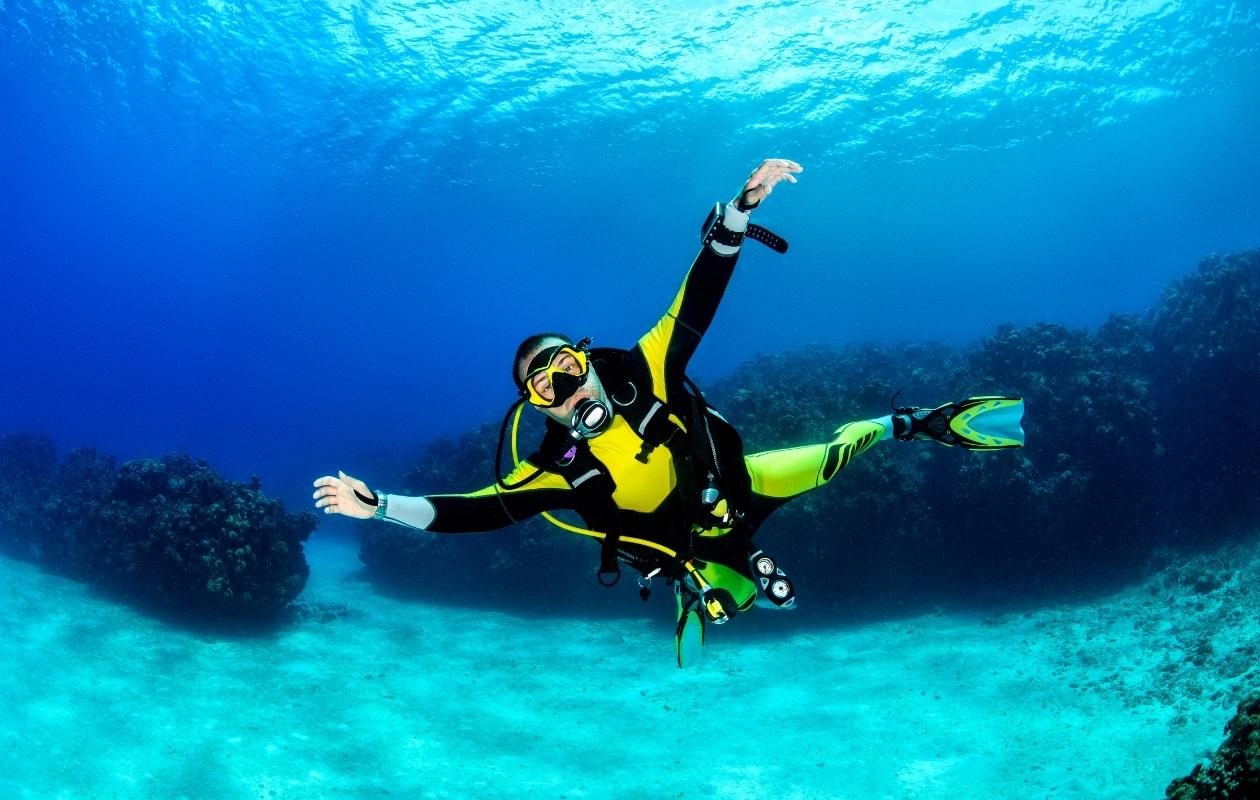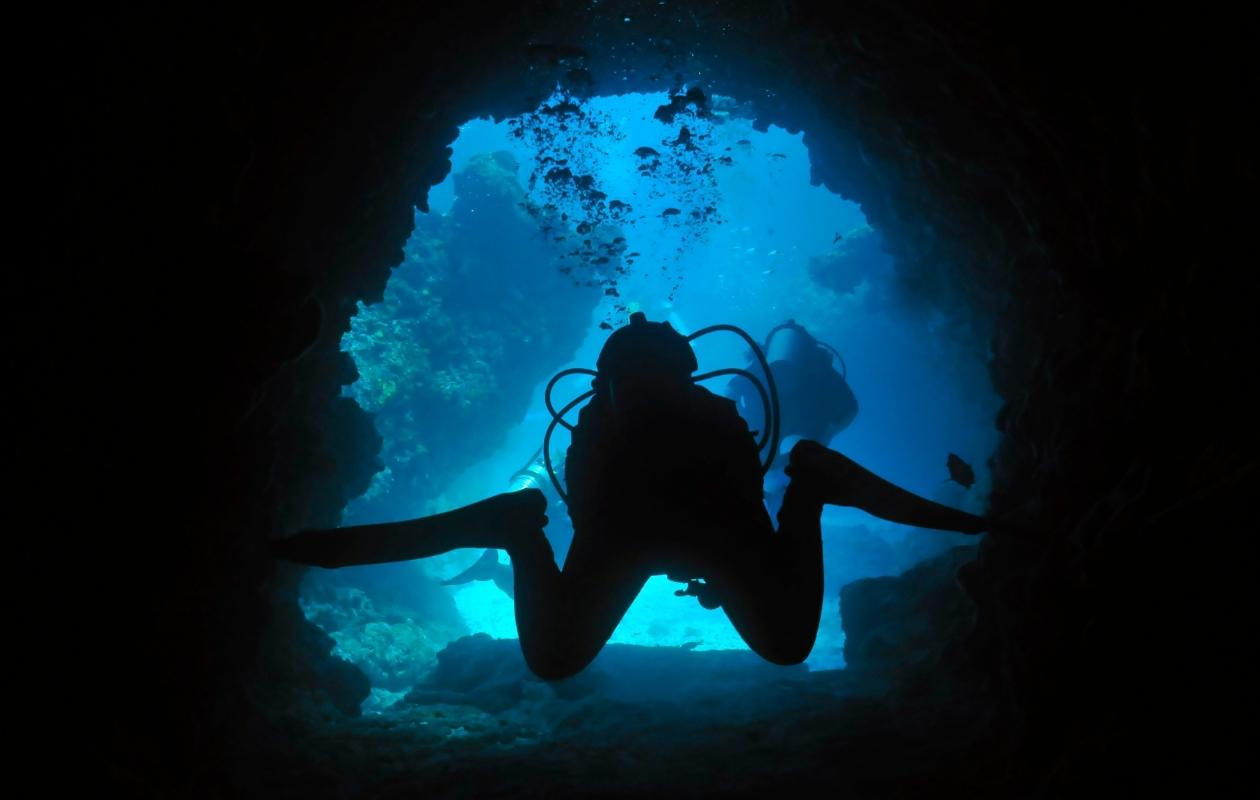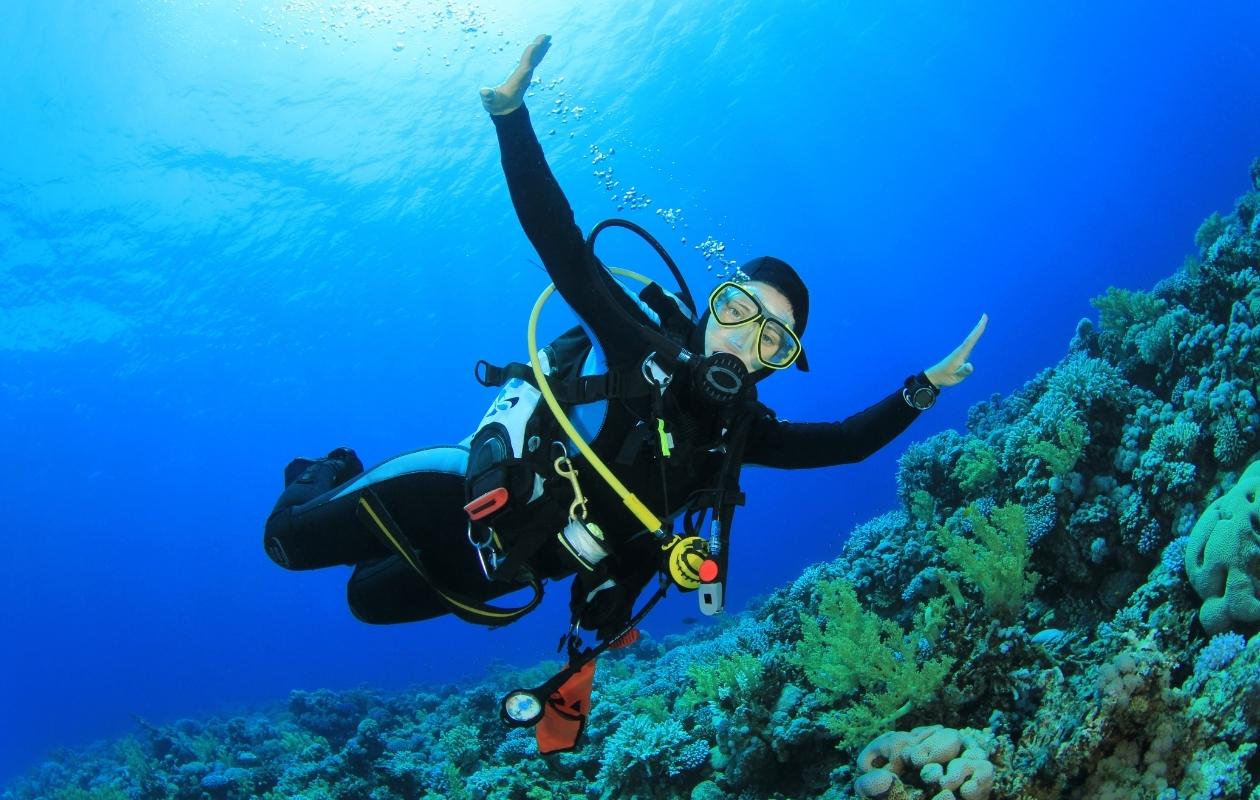Why is perfect neutral buoyancy in diving so important? From a basic diving course such as Open Water Diver PADI, we know that an object immersed in water has neutral buoyancy if it neither submerges nor emerges. In other words, it stays constantly at one depth. How is this related to scuba diving?
Surely you have heard from the first moments of the course that it is important to maintain perfect neutral buoyancy while diving. But what exactly does this mean and how to master neutral buoyancy diving skills? That’s what you will learn in this text. Let’s get started!
Neutral buoyancy in diving
You already know that neutral buoyancy means that state when something submerged in water does not sink and at the same time does not return to the surface. And this is exactly what we mean when we talk about diving. After all, we don’t want to go to the bottom like a rock, but we also don’t want to stay only on the surface of the ocean. We want to be somewhere in between, and that’s what this neutral buoyancy in diving is.
However, maintaining neutral buoyancy can be a problem especially for those new to diving. This is due to the simple fact that you are just beginning your diving adventure and everything is new and different than on the surface. New diving equipment, new skills to master and a clash with the unforgiving laws of physics. But relax! Everything is masterable. Also perfect buoyancy in diving.

Maintaining neutral buoyancy
Maintaining neutral buoyancy is one of the most important skills for any diver. You will start learning it at the very beginning of your diving adventure, namely on the PADI Open Water Diver course. And your first dive in the ocean will already give you an idea of how to control your body and equipment to simply maintain the position you want. After that, practice will remain.
In this course you will do various exercises such as hoover and pivot and see how much you can do using only your lungs. The key is to understand how it all works and that adding air to BCD is not always necessary. Of course, as I mentioned, practice is needed to master perfect buoyancy, but there is really nothing difficult about it.
Take control, feel like an astronaut!
What is the relationship between space travel and diving? It turns out that quite a lot, especially when it comes to maintaining buoyancy. When diving, we can experience something similar to a state of weightlessness and the effect of “flying.” This is why astronauts practice in a pool of water before going into space.

After a dozen or so dives, you’ll start to get the point of achieving neutral buoyancy without a problem. However, to really understand all the rules and accelerate your development in diving, it is advisable to take a specialization course in perfect zero buoyancy. During the specialization course, the emphasis is on exercises that will teach you to hold any position underwater. Even how to move upside down.
Neutral buoyancy in diving is a must
Neutral buoyancy in diving is a must for many reasons. First, it affects your safety while diving. Can you imagine exploring wrecks and hitting everything because you can’t maintain a decent position? Doesn’t that sound unreasonable, to say the least? That’s why you need to be able to control your body underwater, regardless of the conditions.
Another aspect is your performance while diving. Maintaining perfect buoyancy will allow you to swim more efficiently and use less air, and this will obviously translate into time spent underwater. Beginner divers use up the air from their scuba cylinders much faster for this very reason. They are unable to maintain the desired position and make a mass of unnecessary movements, forcing themselves to strain.
How do I balance myself properly?
Maintaining your position during a dive is the result not only of experience, but also of preparation and properly selected equipment. If you have too large or too small a BCD, diving will be uncomfortable to say the least, and maintaining perfect buoyancy will no longer be so easy. The most important thing, however, is to choose the right amount of load.
We take lead weights with us when we dive, because going underwater without them would be almost impossible. Our body and all diving equipment tends to have a positive buoyancy force, so we will be pulled toward the surface. Therefore, we need extra weights to neutralize this. However, if the amount of this weight is incorrect, it will have a big impact on our buoyancy while diving.
Improper lead affects buoyancy
Correct buoyancy in diving goes hand in hand with correct weight. When a diver is poorly weighted, it’s harder to maintain the zero buoyancy we need. If you have too little weight, you will have trouble maintaining the position and depth you want. On the other hand, if the lead is too much, you will need to add air to the BCD to keep from sinking.
Maintain proper trim
Trim is called the position of the diver’s body that he takes during the dive. Our ideal trim is the lying down position, where we have the lowest water resistance and can move with the greatest efficiency. And remember what I said earlier? More efficiency means less air consumption.
In addition, in this ideal diving position, the hands should be close to the body and we definitely do not use them while diving. I understand that you remember from swimming lessons that using your hands is important, but not in diving….

Correct trim in diving also means correct load distribution. I said above that the right amount of lead is very important. But imagine that I put all the necessary lead only in my left pocket. Do you think I will maintain perfect buoyancy and keep the right trim? Of course not. So it is equally important to distribute the load evenly.
Training neutral buoyancy in diving makes perfect
Controlling neutral buoyancy is a skill we can only learn through practice and frequent dives. If you are a beginner or have had a long break from diving, it is a good idea to give yourself a little reminder during your first dives. With every hour you spend underwater, you will notice how your buoyancy changes.
At some point you will reach a point where you will control it mainly with your breathing. At this point, it’s worth mentioning that your breathing should be a bit deeper and calmer than that of your walking. It’s a good idea to focus on making the process a bit longer, that is, inhaling and exhaling should be done long and slowly. This will not only allow you to better control your buoyancy, but also significantly reduce your air consumption. It’s a bit like when you meditate.
Neutral buoyancy in diving – let’s recap
Neutral buoyancy is the basis of being a good diver, and its absence will not allow you to fully enjoy all types of diving. But rest assured, while zero buoyancy is already taught in the basic course, in the advanced course you can choose Peak Performance Buoyancy, and also think about the specialized Perfect Buoyancy course. All of this is designed to give you full control over your body while diving and make it even more enjoyable. All that remains is to find a good dive center and start training.



